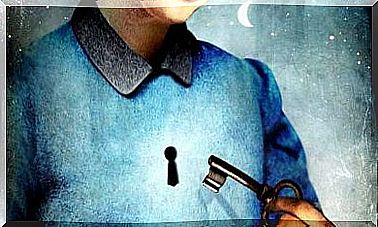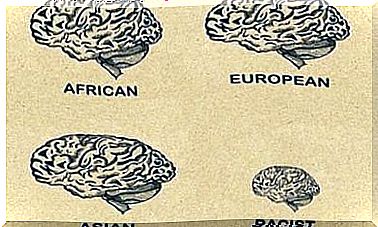We All Go Through The Bend Of Oblivion, But What Is It?
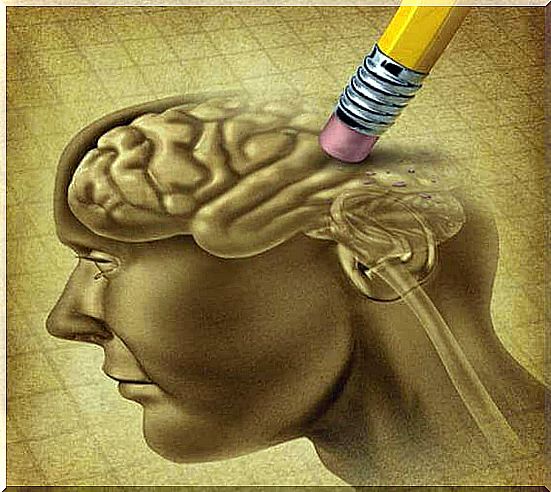
As we have said, Ebbinghaus was the first psychologist to scientifically study memory, or at least he was the first to try. His training took place at the University of Bonn, where he obtained his doctorate in 1873. He then developed his career as a researcher focusing on the study of memory and always keeping an idea in mind: methods of quantitative analysis are applicable to mental processes superior.
To put it another way, Ebbinghaus thought that in psychology it could be measured and measured well. For this reason, he did not hesitate to take as a reference variable the one commonly used to measure: time. In his case, the time it took to forget.
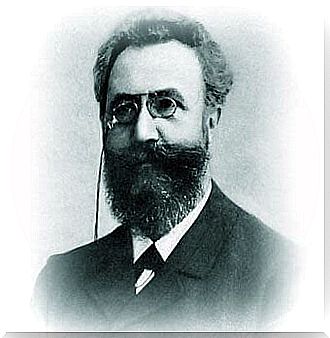
He carried out a large number of very reliable experiments, for the tools that could be counted on at the time in the field of experimental research. With these tests, he tried to describe how our memory works according to a series of laws.
For example, in order to explore memory, he made a test known as the “gap test”. It consisted in repeating phrases in which some words were voluntarily omitted. With this work, he not only hoped that the nature of learning and forgetfulness could be better understood, but also that his work would acquire practical value in education.
Many of the criticisms directed at the results of his research stated that his interest was in the acquisition of habits of verbal repetition, rather than the study of memory and its functioning in everyday situations. He was criticized that these results were applicable only to controlled conditions in the laboratory because, in real life, our memory is subjected to conditions that we can hardly replicate in such a context, such as motivation, unintentional review or the influence of emotional impact.
His works include The Intelligence of School Children (1897), Memory (1913), Textbook of Experimental Psychology , vol. 1 (1902), vol. 2 (1908). Before talking about the forgetting curve, it is necessary to know some fundamental aspects of memory and learning that will help us better understand its importance.
What is learning?
It is not easy to give an official definition of learning because there are so many different perspectives. Each of them emphasizes a different facet of this complicated process. A definition of learning might refer only to visible behaviors.
For example, someone who drives a car well implies that this person has learned to drive. Another definition of learning could also allude to a state of inner knowledge which can, in turn, be demonstrated by giving examples of how a theory is worked out .
Many dictionaries define this type of learning as “knowledge acquired through study”. In everyday language we say we know the Greek alphabet, the names of the bones of the inner ear or the stars of the constellation of Cassiopeia. Both perspectives (visible behavior or inner state) are important and compatible viewpoints in contemporary learning theory.
Learning can be defined in the following way: “learning is an intentional change that affects the mental state of an organism, is a consequence of experience and has a relatively permanent influence on the faculty inherent in subsequent adaptive behavior”.
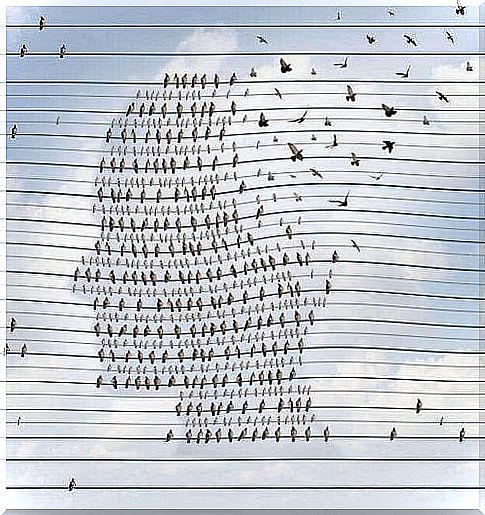
The researches of Ebbinghaus
The rules of association had a direct impact on the study of learning. There is no better example of the work of H. Ebbinghaus (1850-1909). According to the scholar, the development of an association between two mental events could be better studied using stimuli lacking any previous association.
Specifically, while trying to work with meaningless stimuli, Ebbinghaus used so-called nonsense syllables (BIJ or LQX) which he considered lacking any intrinsic meaning. Ebbinghaus invested a lot of time in associating one stimulus with another, and then repeating them.
By working in this way and with such stimuli (nonsense syllables), he tested many of the principles of association, developed more than 100 years earlier. For example, it determined whether stimuli written close together in the list were associated more easily than syllables that were not in close proximity to each other.
Ebbinghaus’s research confirmed many of the ideas that were first proposed by British scientists. For example, that proactive associations are stronger than retroactive ones (if the syllable “A” precedes the syllable “B”, then “A” better evokes the memory of “B”, rather than “B” that of “A”) . Interesting, right?
The memory
Studying learning means studying memory and, therefore, also the forgetting curve. You think that learning would not be possible without memory, because the execution of a learned reaction requires the memory (partial or total) of the previous repetition.
Phases of memory
What is stored in memory, what we learn, goes through at least three stages: coding, memorization and retrieval. In the first phase of all learning we encode the information, we translate it into the language of our nervous system and, in this language, we make room for it in our memory.
During the retention or memorization phase, the information or knowledge persist over time. In some cases, this phase can be quite short. For example, information in short-term memory lasts approximately 15 to 20 seconds.
In other cases, memorizing a memory can last a lifetime. This form of memorization is called “long-term memory”.
Finally, the recovery or execution phase is the one in which the individual recalls the information and puts the answer into practice, proving that he has learned previously.
If the execution is consistent with the levels shown during the acquisition, it means that the forgetfulness is minimal. Otherwise, if the execution lapses significantly, we can speak of oblivion. In many cases, moreover, it is easy to quantify what has been lost and how long it took us to lose some of what, in due course, had been encoded.

Why does the oblivion curve occur?
A fundamental challenge of psychology is to understand why memories persist once they have been encoded or, conversely, why they are forgotten after learning. There are various approaches that try to answer these questions.
Memorization theories
Some memorization theories focus on what happens to information during the memorization phase. For example, the theory of decay states that, during the retention phase, forgetfulness occurs because memories weaken or diminish in intensity. This is comparable to what happens to footprints in the sand by the sea.
Although there is evidence to support this view, few contemporary scholars describe forgetfulness in terms of memory decay.
On the other hand, the theory of interference states that forgetfulness occurs as elements that compete with others are acquired in the course of memorization. For example, acquiring new information can make one forget previous information ( retroactive interference ). This happens when a concept is made up of many complex sentences instead of just one simple one and then, in the end, we get lost.
Likewise, the presence of prior information can interfere with what we store later (proactive interference ). For example, we’ll remember someone’s phone number better if it’s similar to ours.
Recovery theories
Recovery theories state that forgetfulness is the consequence of an error in the information retrieval process during the execution phase. In other words, the element of memory “survives” the retention interval, but the subject cannot access it.
A good analogy can be: we are in the library and we are looking for a book that is not in the right place on the shelves. The book is in the library (the information is intact), but we can’t find it (the subject cannot retrieve the information). Much contemporary research on memory supports this view.

The Ebbinghaus Curve of Oblivion
The mere passage of time appears to have a negative effect on retention capacity. As we have already stated, Ebbinghaus (1885) was the first to systematically study how things are forgotten as time goes by, shedding light on what is known as the Ebbinghaus curve of oblivion. The concept of “curve” refers to the graph resulting from his research.
We have already specified that he used himself as the subject of his studies, which consisted of learning thirteen-syllable lists that he repeated until he made no mistake in two consecutive attempts. Subsequently, he evaluated his retention capacity with time intervals between twenty minutes and a month. Based on these experiments, he worked out his famous oblivion curve.
What results did Ebbinghaus achieve?
These results attempt to explain how long it is possible to keep content in memory if it is not revised sufficiently. The answers that emerged from his studies showed that forgetfulness occurs even if the intervals are short. If the material is insignificant and therefore devoid of association, forgetfulness increases as time passes: very quickly at first and more slowly later. So, if we graph this information, we see that the forgetting curve becomes logarithmic.
The forgetting curve illustrates memory loss over time. A related concept is that of memory intensity, which reveals how long a content is stored in the brain. The more intense a memory is, the longer it is kept.
A typical graph of the oblivion curve shows how, in a few days or weeks, we forget half of what we have learned, unless we review it. Furthermore, each review allows the following to be more distant in time. Consequently, if we want to remember something, the first review should do it immediately, so that we can carry out the next one when more time has passed.
As Ebbinghaus discovered, the memory curve has a much steeper slope when the stored material is meaningless. Conversely, it is almost flat when it comes to traumatic experiences. On the other hand, a slight slope may be due, more than to the characteristics of the information, to an implicit review (for example: reliving experiences, using the alphabet, looking for words in the dictionary).
To give a practical example of how quickly you forget the data and therefore the oblivion curve in the absence of a review: one day after having studied without having reviewed, you can even forget 50% of the notions studied. Two days later, he doesn’t even remember 30%. A week later, we must consider ourselves lucky if we can remember more than 3%.
